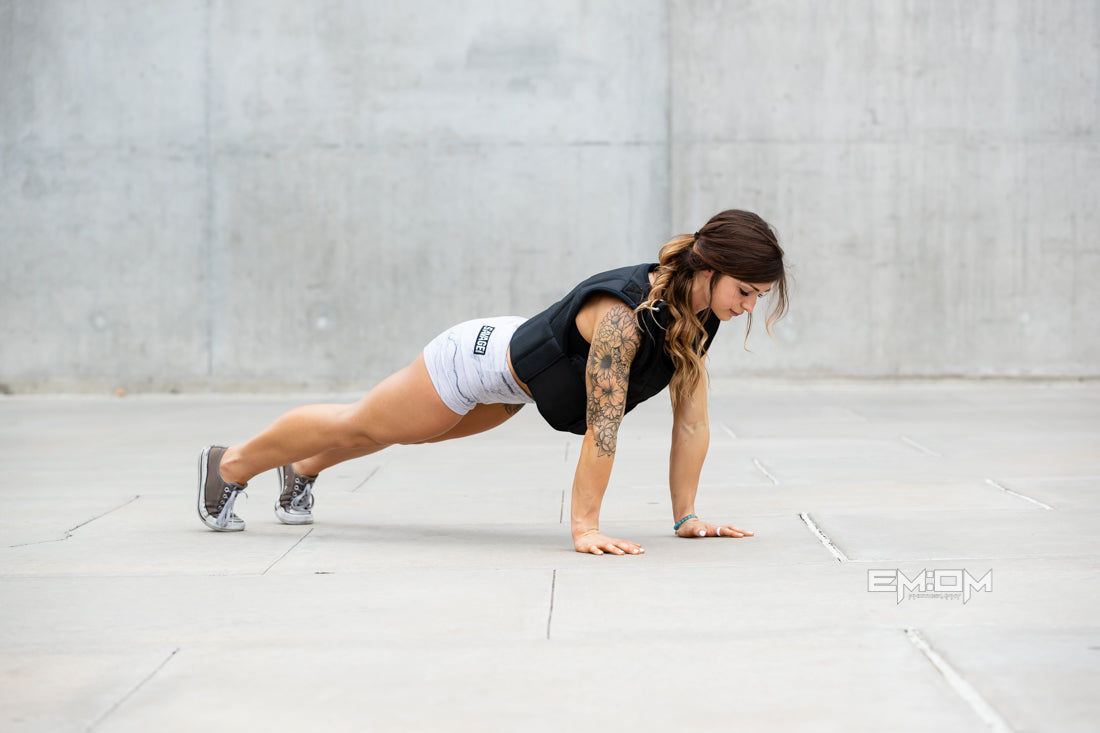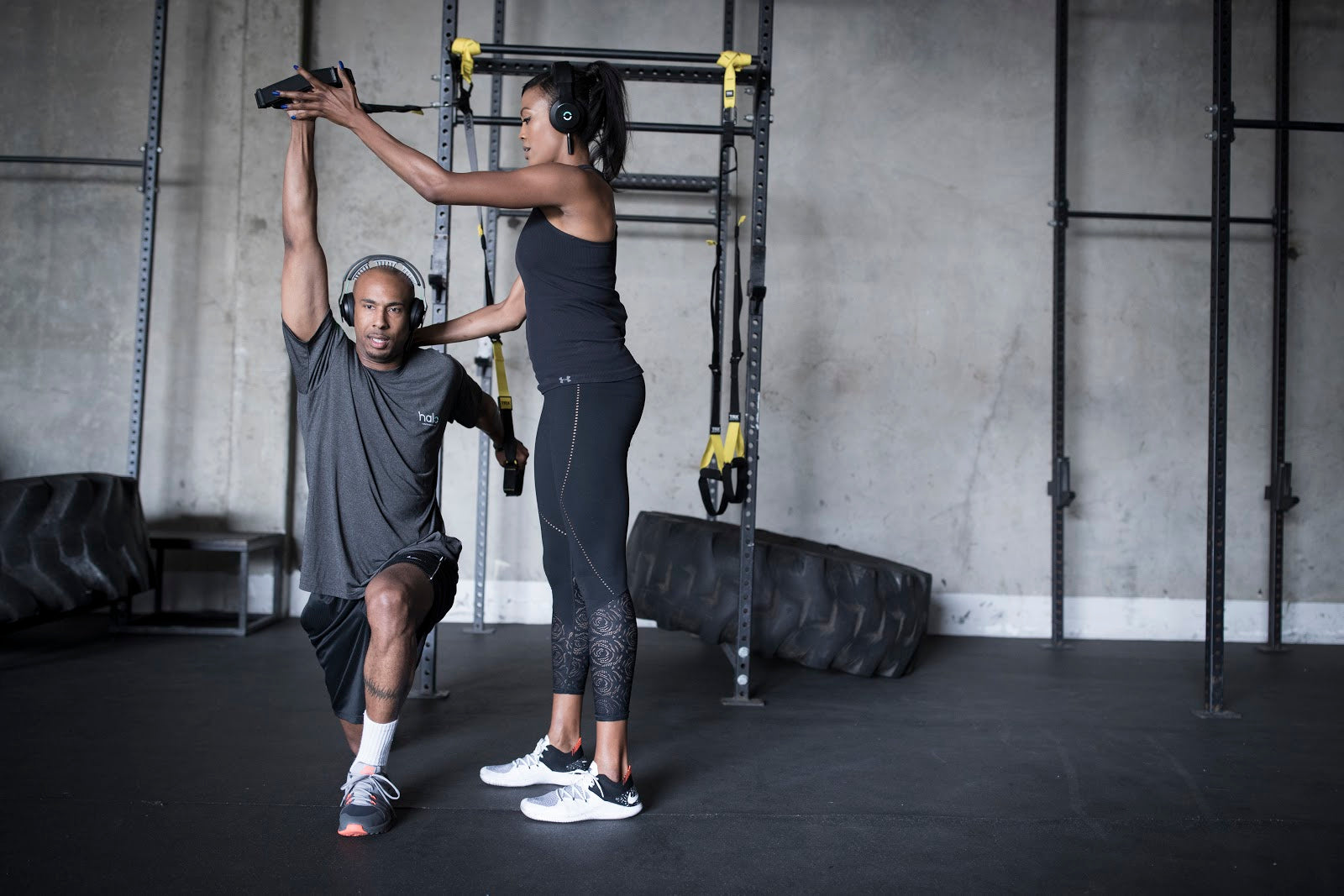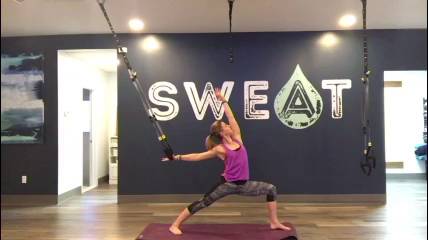Not to sound like a greeting card, but everything you need for strength is already inside you. Seriously, gear is great—and we obviously love creating the best fitness tools on the planet—but bodyweight training is awesome all by itself. (It was actually the inspiration behind our TRX Suspension Trainer™ .) The point is you can get a heart-pounding, muscle-pumping workout without any equipment at all. And since we love to work out with friends, we’re even hosting a series of free bodyweight workouts through our TRX Training Club℠ platform.
Before we hop into class together, let’s discuss why and how bodyweight exercises work.
Why bodyweight workouts work
Ever hear the saying “The best workout is the one you do”? Bodyweight workouts fall in that category. With a few basic bodyweight moves, you can always build a workout, no matter where you are. Sure, you could do something more intense with supplemental weights or bodyweight equipment like resistance bands, but bodyweight will get the job done.
Plus, most bodyweight exercises are actually full-body exercises, so bodyweight workouts are super-efficient. Think about it: When you plank, you have to engage your full body. In a squat, your core has to keep working to keep your chest lifted.
And there’s always a way to shake up the challenge of a bodyweight workout.
Push-ups starting to feel easy? Try a decline push-up, (i.e. hands on the floor, feet on an elevated surface). The same thing with lunges: When a step-back lunge ceases to challenge you, pop your back toe on a chair, and turn it into a Bulgarian split squat. There’s always a way to spice up an exercise, even without adding weight.
The goal of exercise—other than feeling great—is to increase endurance, strength, mobility, stability, and flexibility. Bodyweight workouts can do all of those things.
Why trust TRX®?
We’ve guided thousands of trainers through our TRX® Education programs, and we know what works. We’ve taught fitness professionals how to safely program and cue hundreds of workouts.
But we didn’t stop there.
Trainers, physical therapists, and wellness professionals don’t just take your word when you say, “Hey, I built this thing and it can help you increase strength and mobility.” No, you have to have science and expertise behind those claims. So we got that expertise.
We worked with a lot of people with a lot of letters behind their names to prove that our methods work. We’re talking PhDs and MDs and PTs; ACE, ACSM, and NASM-certified pros; definitely a few JDs; maybe even a DDS or DVM. Who knows?
Safe, efficient movement became our mission.
It’s true: We make really good tools for fitness. But more than anything, we’re committed to helping people move.
Yes, you can build muscle with a bodyweight workout
There are two components to building muscle: Muscle protein breakdown (MPB) and muscle protein synthesis (MPS). You increase your muscle mass through exercise when the MPS is greater than the MPB.
Strength training is typically associated with increased muscle mass, while sustained periods of aerobic training, (like distance running, swimming, or cycling,) are associated with lean muscle. For strength-training without weights, your tools for increasing muscle mass are tempo and time under tension.
High Intensity Interval Training, better known as HIIT, is a tempo-based solution. Studies show that regular HIIT workouts paired with strength exercises like squats and lunges can increase muscle mass. (Tempo variability—slowing down or speeding up an exercise—can change the challenge.)
To increase mass through time under tension, you slow down the pace, and hold an exercise at the hardest point of the move. For example, in a push-up, you could lower down from straight arms to bent arms on a count of three, hold at the bottom of your range of motion for a count of three, and then push up to straight arms quickly. That shaky feeling you get as you lower and hold is part of the time under tension burn.
In other words, lifting heavy stuff isn’t the only way to get stronger. And these principals don’t just apply to bodyweight exercise. They’re also the foundations of Suspension Training™.
Fun fact: Bodyweight powers the TRX Suspension Trainer!
Confession: We’re bullish on bodyweight because bodyweight is one of the elements that makes the TRX Suspension Trainer so effective. In the most simple terms, TRX Straps are a tool for changing the angle of a bodyweight exercise, whether that means upgrading or downgrading it.
Let’s talk about simplifying an exercise first, using bodyweight squats and TRX Squats as an example.
A lot of people dismiss squats as a beginner move, but there’s actually a lot involved. Core strength, balance, pelvic stability, hip mobility, and ankle dorsiflexion all come into play. As you get deeper into a squat, all of those elements have to come together for you to maintain proper form.
In a TRX Squat, the Suspension Trainer absorbs part of that work, helping you find your optimal range and stabilize. It can help you understand what “right” feels like, and even find a deeper squat.
That doesn’t mean a TRX Squat is “easier;” difficulty can be measured by multiple metrics. Here, we look at both strength and mobility. The Straps allow you to work through incremental strength variations, while increasing mobility.
The Suspension Trainer can also work to make an exercise tougher.
We previously used the example of the decline push-up as an upgrade to a standard push-up. You could also level up your push-up by placing your toes through the foot cradles of the Suspension Trainer. Not only does it create the decline position, but it also forces your core to work harder to overcome instability.
Bodyweight exercises could be too much for some people and not enough for others, but the TRX Suspension Trainer can make bodyweight training accessible—and challenging—for anyone, regardless of their strength-training background.
Bodyweight workouts are tough. We’ll prove it.
There are some real doozies in the bodyweight world: push-ups, sit-ups, speed skaters, burpees, sprinter starts, squats, lunges, mountain climbers, tricep dips, planks, accordion crunches. Here’s a simple workout you can do absolutely anywhere with just these moves.
For each set, do 45 seconds of work, followed by 15 seconds of rest. You’ll repeat all three exercises twice before taking a long 45-second recovery, and moving to the next set.
Set 1
- Push-ups
- Sit-ups
- Tricep Dips
- [45-second break]
Set 2
- Sprinter Starts (Left)
- Squats
- Sprinter Starts (Right)
- [45-second break]
Set 3
- Mountain Climbers
- Accordion Crunches
- Alternating Lunges
- [45-second break]
Set 4
- Skaters or Curtsies
- Plank
- Burpees
- [45-second break]
Total workout time: 39 minutes, with just bodyweight.
Want more? We got ya.
With TRX Training Club, our new streaming platform for classes, you can fire up a bodyweight workout from our On-Demand library absolutely any time. Access to the On-Demand library only is just $4.99 a month. Or, if you’ve got a TRX Suspension Trainer™ and you want to hop into our live classes as well, you can get an unlimited subscription for only $19.99 per month.
We want you to get hyped for TRX Training Club, so we’re throwing in a free week of unlimited classes to let you try it out. (First time members only, okay?)
If you still need more arm-twisting, we’ve got bodyweight-only community classes—that means free!—going for a limited time so you can see what the fuss is about before you decide when you want to start your (still free) trial week.
Bodyweight training is not a lesser form of training. For thousands of years, it was the only form of training. If you like to keep it old school, we want to work out with you. Hop into a TRX Training Club session, and discover how TRX brings the heat to bodyweight workouts.



